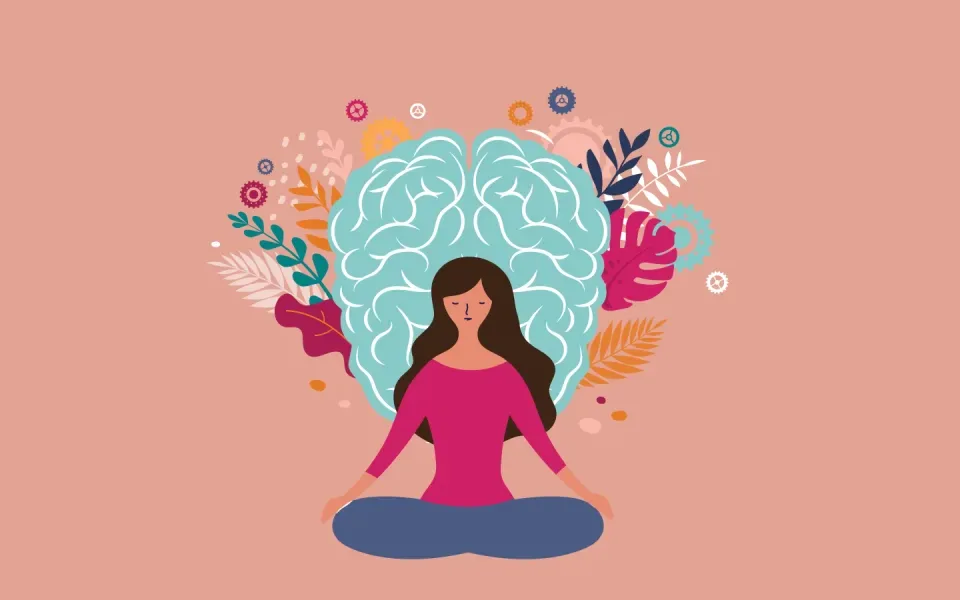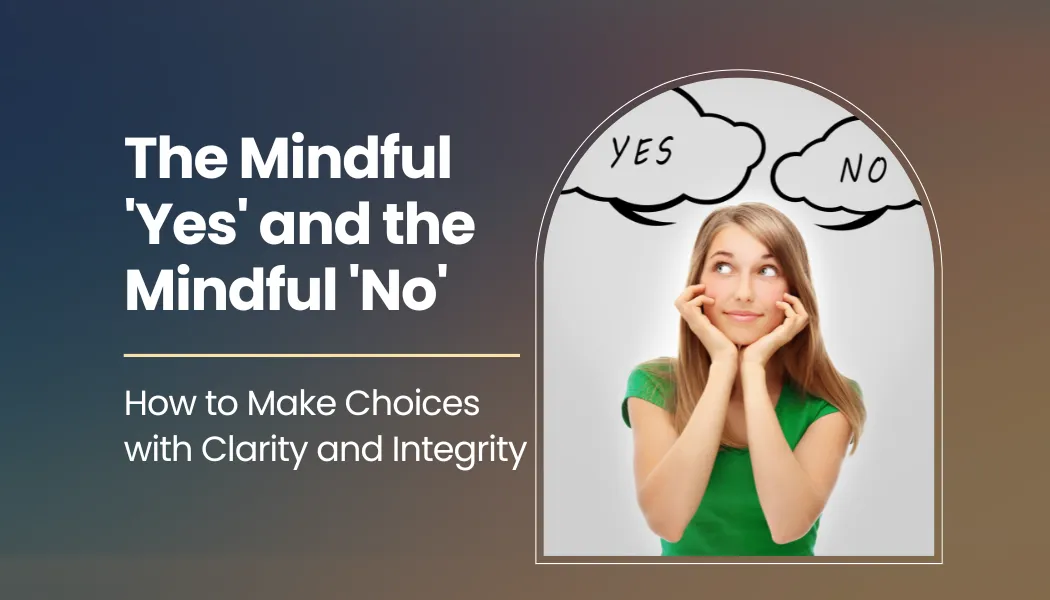Every day, we make countless choices—some big, some small. From agreeing to projects at work to committing to social obligations, we are constantly deciding when to say “yes” and when to say “no.” But how often are these choices truly conscious?
Many of us operate on autopilot. We say “yes” out of guilt, fear of missing out, or pressure, and we say “no” impulsively or defensively. Mindful communication transforms these decisions into intentional acts. A mindful “yes” aligns with your values and energy, while a mindful “no” protects your boundaries without creating unnecessary conflict or guilt.
This article explores:
- The importance of mindful decision-making
- The difference between reactive and mindful responses
- How to practice saying “yes” and “no” with awareness
- Practical techniques to cultivate balance
- Real-life examples and exercises
How many times have you said “yes” when your whole body was screaming “no”? We’ve all been there agreeing to an extra project, an inconvenient social event, or a favor we don’t have the time or energy for. This automatic “yes” often comes from a place of people-pleasing, fear of missing out, or a sense of obligation. It’s a habit that can leave us feeling overextended, resentful, and completely drained.
Conversely, we sometimes say “no” out of fear, defensiveness, or habit, closing ourselves off to opportunities that could lead to growth and connection.
This is where the mindful ‘yes’ and the mindful ‘no’ come in. It’s a practice of bringing conscious awareness to our decisions, allowing us to respond from a place of clarity and integrity, rather than knee-jerk reaction. This simple shift empowers us to honor our energy and our boundaries, leading to a more intentional and balanced life.
Table of contents
Why Mindful ‘Yes’ and ‘No’ Matter
1. Protecting Mental and Emotional Health
Saying “yes” to everything often leads to stress, overwhelm, and burnout. On the other hand, saying “no” without mindfulness can create guilt or strained relationships. Mindful responses help:
- Recognize your limits
- Honor personal values
- Reduce anxiety and resentment
2. Enhancing Relationships
Mindful choices communicate respect—not just for yourself, but also for others. People notice when your “yes” is genuine and your “no” is kind but firm. This approach fosters:
- Trust and authenticity
- Clear communication
- Healthy boundaries
3. Increasing Personal Productivity
Reactive “yes” decisions can dilute your focus and energy. By being intentional, you can prioritize commitments that truly matter. Mindful “no” choices free up space for activities that align with your goals.
The Difference Between Reactive and Mindful Responses
| Aspect | Reactive Response | Mindful Response |
|---|---|---|
| Awareness | Low | High |
| Emotional Influence | High (fear, guilt, pressure) | Moderate and regulated |
| Decision Criteria | External pressures | Internal values and priorities |
| Outcome | Stress, regret, resentment | Clarity, alignment, peace |
Reactive responses often serve immediate impulses or social pressures, while mindful responses consider long-term well-being and alignment with personal values.
The Unconscious Habit: Why We Get It Wrong
Our default responses often stem from years of conditioning. We learn to say “yes” to be liked, to be seen as a team player, or to avoid conflict. We learn to say “no” to protect ourselves, to avoid vulnerability, or to stay within our comfort zones. These are not deliberate choices; they are deeply ingrained patterns that take over before we’ve had a chance to think.
This unconscious way of operating leads to a chaotic inner life. A misaligned “yes” piles on stress and resentment. A misaligned “no” can lead to regret and a feeling of being stuck. The mindful pause is the key to breaking this cycle.
The Practice: Making Your Choices with Intention
Before you respond to a request, an invitation, or a suggestion, create a moment of space. Don’t feel pressured to answer immediately.
1. The Mindful Pause
This is the most crucial step. When a request is made, simply take a beat. You can say, “Let me check my calendar and get back to you,” or “I’ll have to think about that for a moment.” This brief pause gives you the time and space to connect with your inner state.
- Practice: Take one deep, intentional breath. Feel your feet on the floor. Bring your attention inward and notice how your body feels. Does the thought of this request make you feel energized and expansive, or does it make your shoulders tense and your stomach clench? Your body often knows the answer before your mind does.
2. The Mindful ‘Yes’: An Empowered Choice
A mindful “yes” is a choice you make with your whole heart. It comes from a place of excitement, genuine desire, and alignment with your values and priorities.
- Practice: Ask yourself these questions during your pause:
- “Does this align with my current goals and values?”
- “Do I have the energy and time to give this my full attention without sacrificing my well-being?”
- “Does this genuinely bring me joy or a sense of purpose?”
- If the answers are a clear and resonant yes, you can offer your commitment with full enthusiasm and without a hint of resentment. This kind of “yes” is a source of energy, not a drain.
3. The Mindful ‘No’: A Boundary with Compassion
A mindful “no” is not about being selfish or unkind. It’s an act of self-respect and self-preservation. It’s about protecting your energy and honoring your limits so you can give your best to the things that truly matter. It is a “no” to one thing so that you can give a full-hearted “yes” to something else.
- Practice: When you feel the tension and resistance in your body, ask yourself:
- “If I say yes, will I be sacrificing something important to me?”
- “Am I saying yes because I feel obligated or guilty?”
- “What boundary am I protecting by saying no?”
- When you deliver your mindful “no,” you don’t need a lengthy apology or a fabricated excuse. A simple, compassionate response is sufficient: “Thank you for thinking of me, but I’m not able to at this time,” or “I can’t take on anything else right now, but I appreciate you asking.”
The Freedom of Conscious Choice
The mindful ‘yes’ and the mindful ‘no’ are more than just communication tools; they are practices in self-awareness. They teach us to listen to our bodies, trust our intuition, and make choices that reflect who we truly are. This empowers us to stop living a life dictated by obligation and start living a life that is intentionally and joyfully created.
Real-Life Scenarios
Scenario 1: Workplace Commitments
- Reactive Yes: Agreeing to a colleague’s last-minute project, causing stress and missed deadlines.
- Mindful Yes: Assessing workload and capacity, agreeing only if possible without compromising priorities.
- Mindful No: Politely declining but offering alternative support or rescheduling.
Scenario 2: Social Invitations
- Reactive Yes: Attending a social event out of fear of missing out, leaving you exhausted.
- Mindful Yes: Attending only if it aligns with your social energy and enjoyment.
- Mindful No: Declining respectfully, prioritizing self-care without guilt.
Scenario 3: Family Requests
- Reactive Yes: Helping with a family favor despite overcommitment.
- Mindful Yes: Supporting when genuinely able and enthusiastic.
- Mindful No: Setting boundaries to preserve energy and emotional balance.
The Benefits of Mindful “Yes” and “No”
- Clarity and Confidence: Decisions are intentional, reducing doubt and regret.
- Stronger Boundaries: Protect mental, emotional, and physical energy.
- Authentic Relationships: People respond to genuine engagement and respect.
- Enhanced Productivity: Prioritize tasks and commitments that truly matter.
- Emotional Balance: Reduced guilt, resentment, and overwhelm.

Exercises to Practice Daily
- Morning Reflection: Identify potential yes/no decisions for the day and evaluate alignment with values.
- Breath Pause: Before responding to requests, take three conscious breaths.
- Journaling: Record daily choices, reflecting on authenticity and energy impact.
- Mindful Communication Practice: Role-play saying yes and no with a friend or coach.
- Gratitude for Boundaries: Acknowledge the power and freedom in mindful “no.”
Mindful Choices in Digital Life
- Mindful “Yes”: Engage with content intentionally; follow accounts that inspire growth.
- Mindful “No”: Unsubscribe, mute, or scroll less to protect mental space.
- Use pauses before responding to messages or emails, avoiding reactive responses.
Long-Term Impact
Practicing mindful yes/no decisions cultivates:
- Greater Self-Awareness: Recognize what truly matters.
- Emotional Resilience: Navigate stress and expectations with calm.
- Life Alignment: Align daily actions with long-term goals.
- Authentic Relationships: Build trust and respect through thoughtful communication.
Conclusion: Mastering the Mindful ‘Yes’ and ‘No’
Mindful decision-making is a practice, not a perfect skill. By integrating awareness, empathy, and reflection into every yes and no, you create a life that honors both yourself and others.
Remember:
- A mindful yes engages fully and genuinely.
- A mindful no protects boundaries and fosters authenticity.
- Both are expressions of self-respect and intentional living.
Start today. Pause before your next yes or no. Breathe, reflect, and respond consciously. Over time, your choices will transform not only your day but your entire approach to life.
We’d love to stay connected.
Tap to join our WhatsApp channel and receive thoughtful updates, friendly advice, and helpful reminders direct to your phone.
